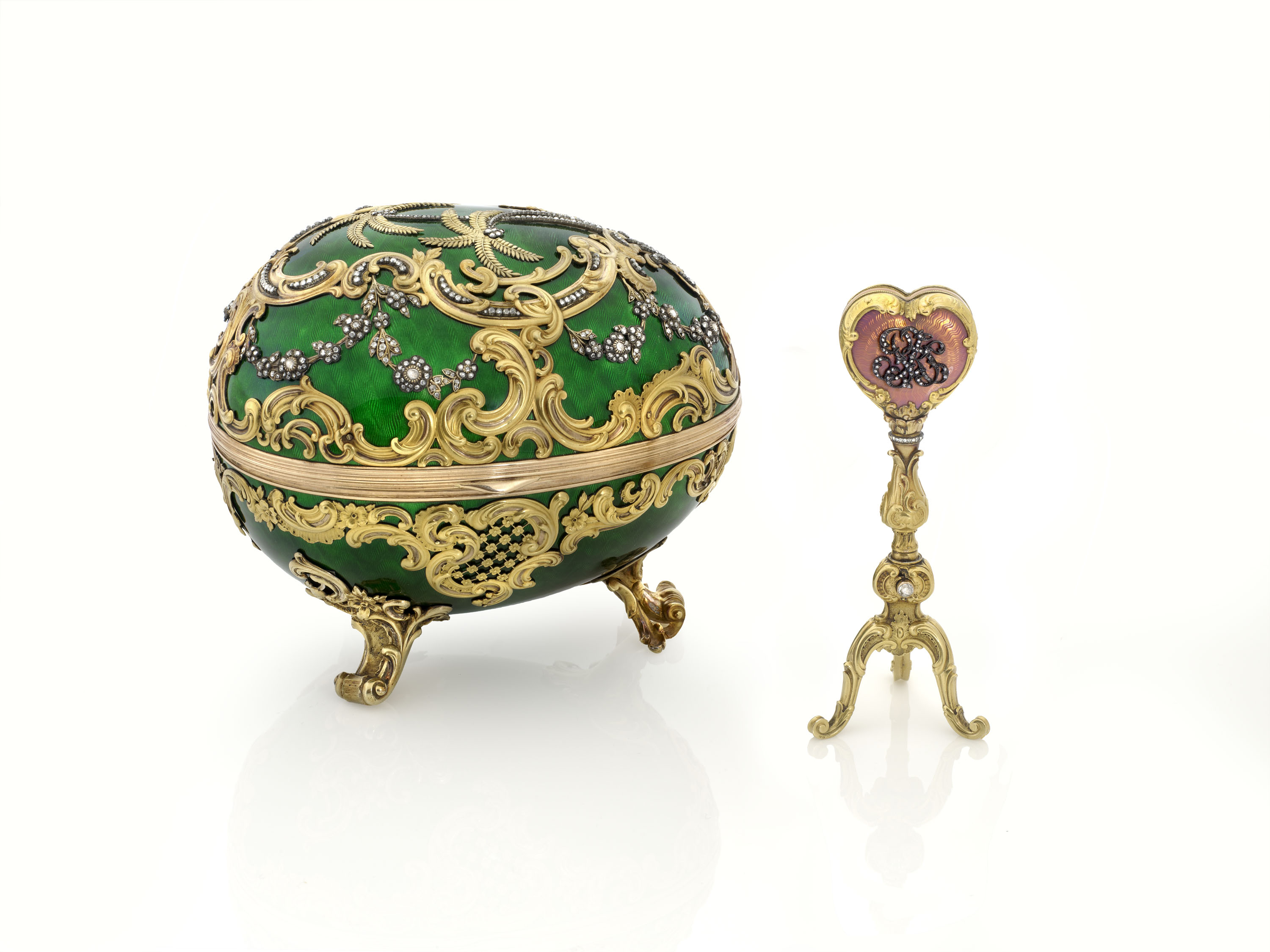Editor’s note: This blog comes to us from Fabergé historian and guest curator Timothy Adams. Adams has 30 years of experience in the jewelry industry and was a guest scholar for the “Fabergé: Imperial Jeweler to the Tsars” exhibition at The Bowers Museum of Cultural Art in Santa Ana, Calif., which also featured pieces from the McFerrin Collection.
The turn of the century brought many new inventions to the lifestyles of those who prospered from the industrial revolution of the late 19th Century. With the advent of electricity came the electric light, the telephone and one of my favorite items: the bell push.
Many people wonder what a bell push is when they see a case of them in the HMNS exhibition Fabergé: A Brilliant Vision. A bell push was another convenience of the Edwardian age that Fabergé set his imaginative mind to designing.
The stately homes of the aristocracy and wealthy merchant class were often staffed with many servants. For centuries, when one needed to call for a servant, one walked over to the wall and used the “bell pull.” This was a long piece of fabric, often with a beautiful tapestry design with a tassel, that was attached to a cable that ran inside the wall down to the servants quarters “downstairs” and rang a bell when pulled.
With the invention of electricity, a simple button attached to an electrical wire could set off a buzzer and/or electric light downstairs, letting the servants know which room needed their assistance.
The McFerrins have collected some beautiful examples of Fabergé bell pushes made of many different materials and gemstones. No two items from Fabergé were ever exactly alike. These are wonderful examples of his enamel work and use of hardstones like nephrite and bowenite, as well as wood.
Fabergé liked to use cabochon-cut gemstones for the actual button or “thumb push.” The bell pushes seen here are round, square and triangular and come in a variety of styles from neoclassical to art nouveau.
 Image via Pixel Party attendee and Flickr user fossilmike
Image via Pixel Party attendee and Flickr user fossilmike
One of the most unique is the three-elephant bell push believed to be purchased by Nicholas II for his mother. It has three elephants with castles on their backs, which is the symbol of the Danish Royal House, and the Dowager Empress was born in Denmark. There is an invoice dated December 24, 1898 that shows the Emperor purchasing a bell push with three elephants. This bell push had to be for a large, important house to have not just one or two buttons, but three. Each thumb push, or button, is a different color cabochon-cut stone. As each stone is pressed, the elephant and carpet it stands on lowers to activate the bell push.
 A whimsical design for a utilitarian object is one of the hallmarks of the House of Fabergé. With unlimited imagination, Fabergé made the common place extraordinary.
A whimsical design for a utilitarian object is one of the hallmarks of the House of Fabergé. With unlimited imagination, Fabergé made the common place extraordinary.







